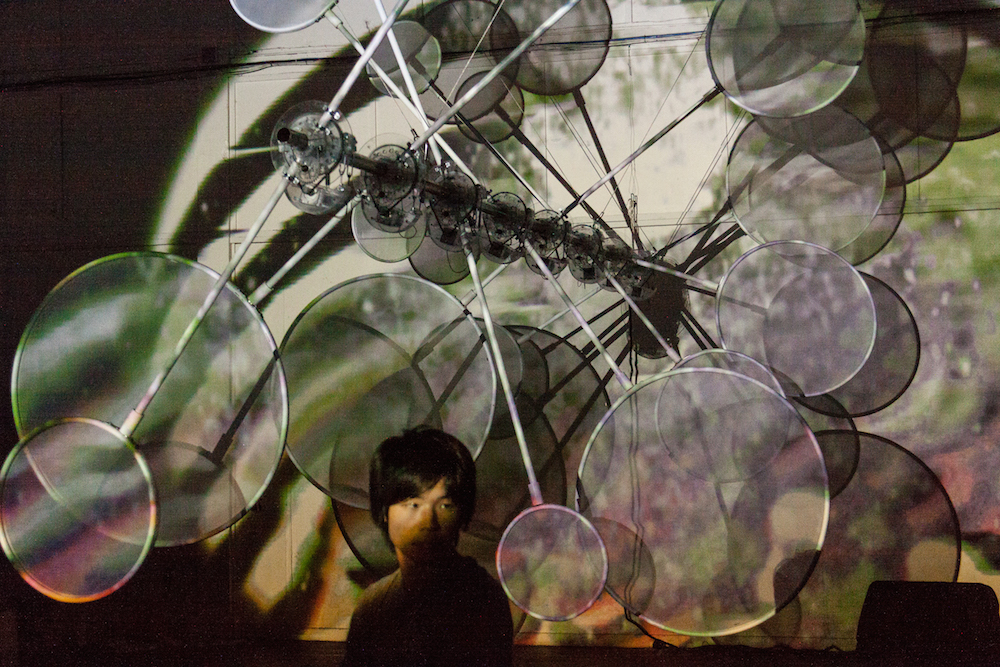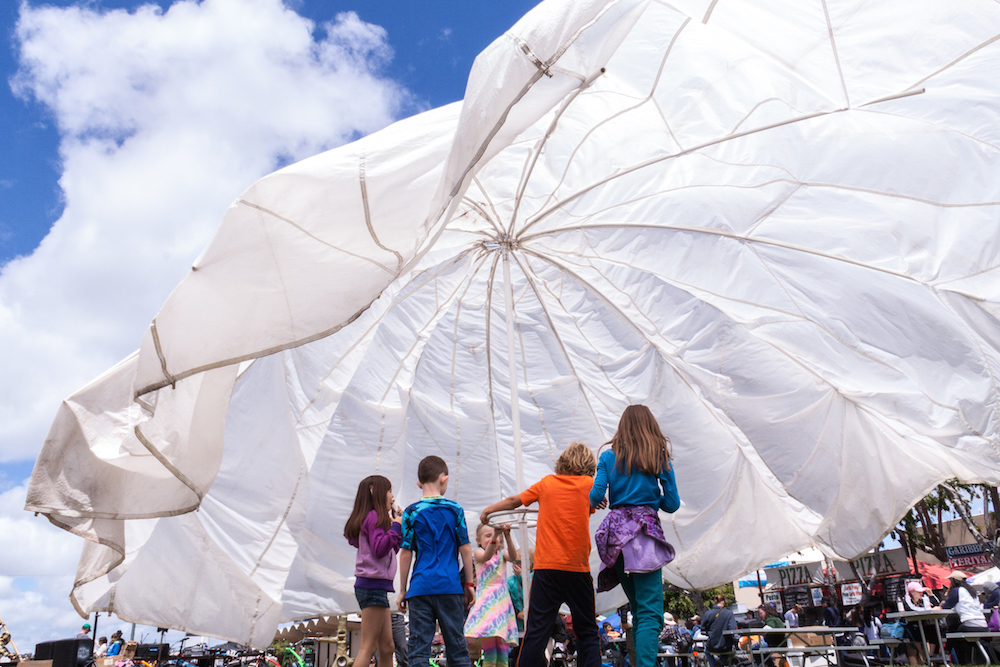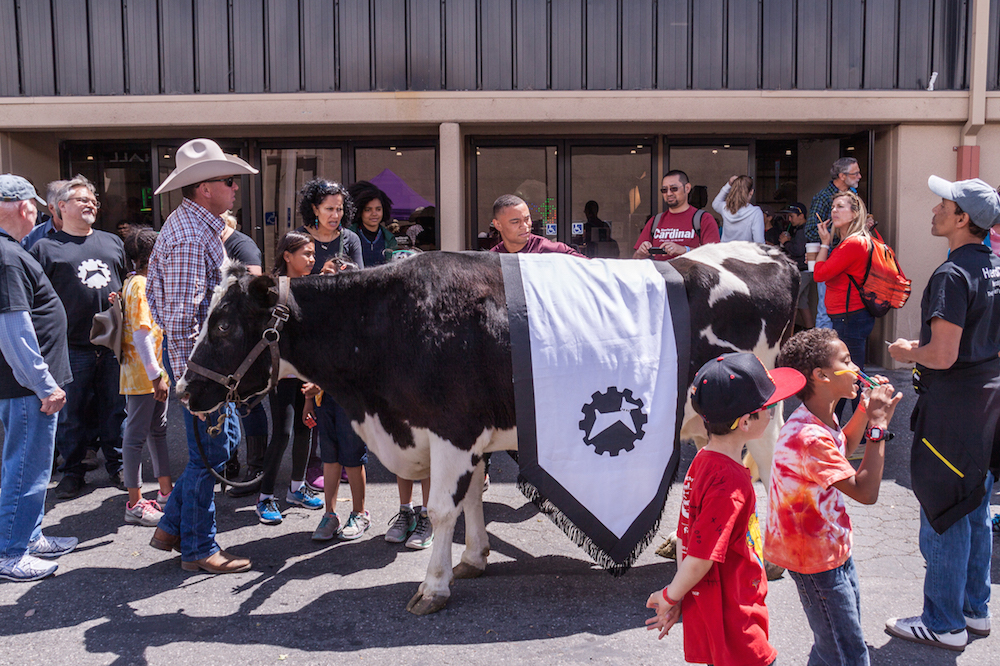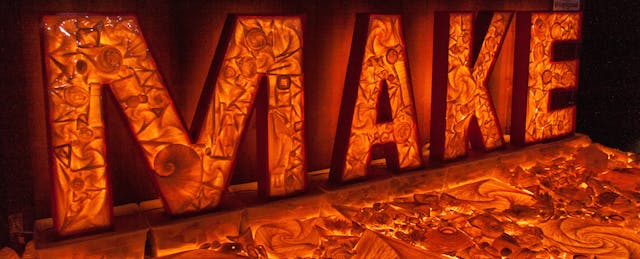Maker Faire Bay Area, now in its eleventh year, is the biggest of all the maker faires. There were thousands of exhibitors and tens of thousands of visitors. While we couldn’t see everything, we did lay eyes on a number of beautiful things, and we spoke to some people with great ideas that we’re itching to share.
THE FIRST SCHOOL MAKER FAIRE: Roughly 50 teachers gathered at the first-ever, sold out School Maker Faire Workshop the morning before Maker Faire began. Travis Good, Producer of San Diego’s Maker Faire, spoke about involving schools in cities’ maker faires. His reason? “Students are my best sources. We’ve had ten museums and hundreds of exhibitors participate, but students are by far my best exhibitors. They don’t think things are impossible.” Read more about the School Maker Faire Workshop here.
INTEL AND ARDUINO cohosted an exhibition booth promoting Arduino’s new online platform Arduino Create, which allows users to access various facets of the Arduino community and technology, and Intel’s new Curie Chip aimed at wearables, which powers Arduino 101. Massimo Banzi, creator of Arduino, announced Arduino Create during his talk “The State of Arduino,” given on Saturday. He described the portal as a “one stop shop for makers.”



THE US DEPARTMENT OF ENERGY was out in force at Maker Faire Bay Area. The Department hopes to demystify the goings-on at its various national labs in the Bay Area by portraying its scientists as makers. Those scientists also hope to excite kids about the advanced technology they get to use. We spoke to three scientists about sensors, supercomputers and cybersecurity to learn more:
First, the cybersecurity experts:
The sensor scientist:
Third, the supercomputer geeks:
SAN FRANCISCO’S EXPLORATORIUM brought its “Strandbeest,” the brainchild of artist Theo Jansen, to Maker Faire Bay Area promote its upcoming exhibition that features the artwork. The interactive museum also offered pegboards and moving wooden parts for students to create their own rudimentary animations after the fashion of the Strandbeest.
#Ordis is at #MakerFaire. Walking at the Exploratorium booth. #Strandbeest artist Theo Jansen on main stage at 5pm pic.twitter.com/Blu2Bkyi3f
— Exploratorium (@exploratorium) May 21, 2016
AUGMENTED REALITY AND MATH made an appearance together in the form of PlatoAR, a new math tool that aims to make worksheets more fun. The tablet and phone app works by recognizing shapes on a worksheet and projecting them as fully three-dimensional shapes. From there, students can manipulate the shapes to understand their volumes as series of cones, rectangles or other component shapes.

DEMOS APLENTY: One of the most crowded tents at Maker Faire was the “Learn to Solder” tent, which allowed young makers to learn what holds circuit boards together. Would-be makers were tasked with soldering a circuit that would allow a Makerbot pin to light up. We spoke to one volunteer in the tent to learn why it’s important for makers to learn how to solder.
THERE WAS EVEN A COW: HerdDogg, a startup that makes a smart tag to monitor livestock in pastures, brought Daisy the cow, stylishly sporting a HerdDogg tag, to Maker Faire as promotion for the company’s Kickstarter campaign.

“IT’S LIKE THE STATE FAIR FOR NERDS:” Many families return to Maker Faire year after year. We spoke to one family that’s been attending Maker Faire for many years to find out what keeps them coming back. Meet the Bakers from Atherton, CA:


All photos by Blake Montgomery.


